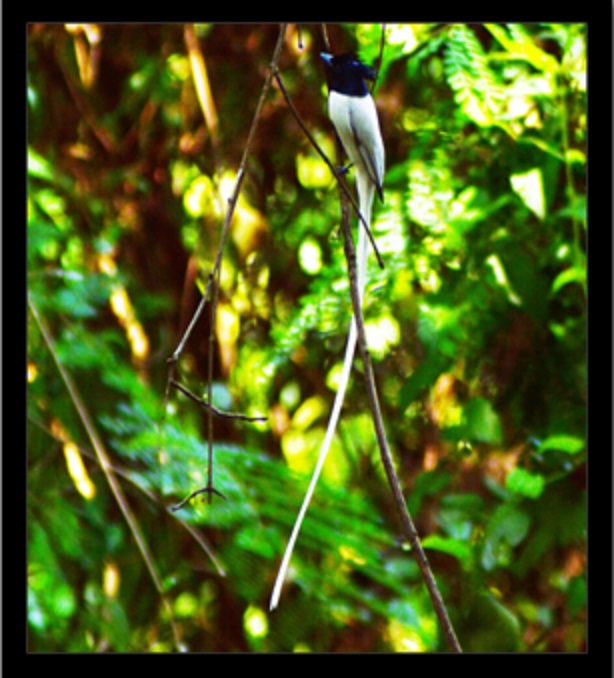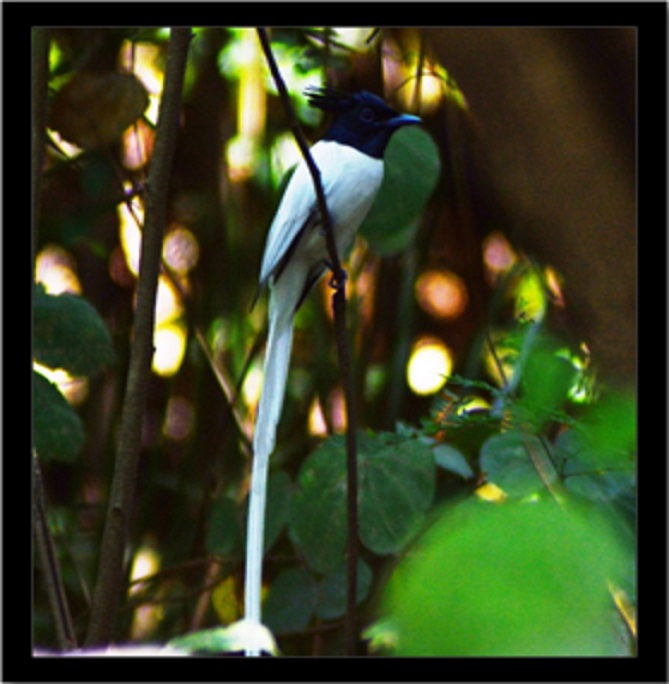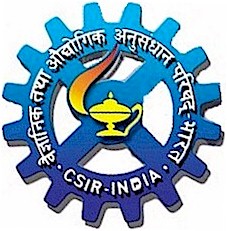(Terpsiphone paradisi)


Terpsiphone paradisi
The adult Asian Paradise Flycatcher measures about 7.5 - 8.7 inches (19 - 22 cm) in length, not including the long tail, which can grow to 9.4 inches (24 cm) in length, and the male's two central, elongated tail streamers up to 12 inches (30 cm). Their wings are between 3.4 - 3.6 inches (86 - 92 mm) long.
Their legs are relatively short, and they tend to sit very upright when perched, similar to shrikes. The body and wings are white. Long-tailed white-plumaged birds have dark shaft streaks. The edges of the wings and tail feathers are sometimes black
Feedings habit generally include insects and micro vertebrate. They usually hunt in the understory of densely canopied trees. These less canopied tree are common in the NEERI campus near guest house and Eastern colony. The Asian Paradise Flycatcher mostly breed from May to July. These birds are monogamous and both share the duties of constructing the nest, incubating the eggs, and feeding and protecting the young.
A clutch usually consists of 3 - 4 eggs, which are incubated for about 21 - 23 days.
The cup nest is made out of twigs bound together with spider webs and is usually situated on the end of a low tree branch. Often, the nest is found close to active drongo nests, which helps to keep predators away from their own nests. Asian Paradise Flycatchers are quite noisy and their most common calls are described as sharpzweet's.
Their legs are relatively short, and they tend to sit very upright when perched, similar to shrikes. The body and wings are white. Long-tailed white-plumaged birds have dark shaft streaks. The edges of the wings and tail feathers are sometimes black
Feedings habit generally include insects and micro vertebrate. They usually hunt in the understory of densely canopied trees. These less canopied tree are common in the NEERI campus near guest house and Eastern colony. The Asian Paradise Flycatcher mostly breed from May to July. These birds are monogamous and both share the duties of constructing the nest, incubating the eggs, and feeding and protecting the young.
A clutch usually consists of 3 - 4 eggs, which are incubated for about 21 - 23 days.
The cup nest is made out of twigs bound together with spider webs and is usually situated on the end of a low tree branch. Often, the nest is found close to active drongo nests, which helps to keep predators away from their own nests. Asian Paradise Flycatchers are quite noisy and their most common calls are described as sharpzweet's.


